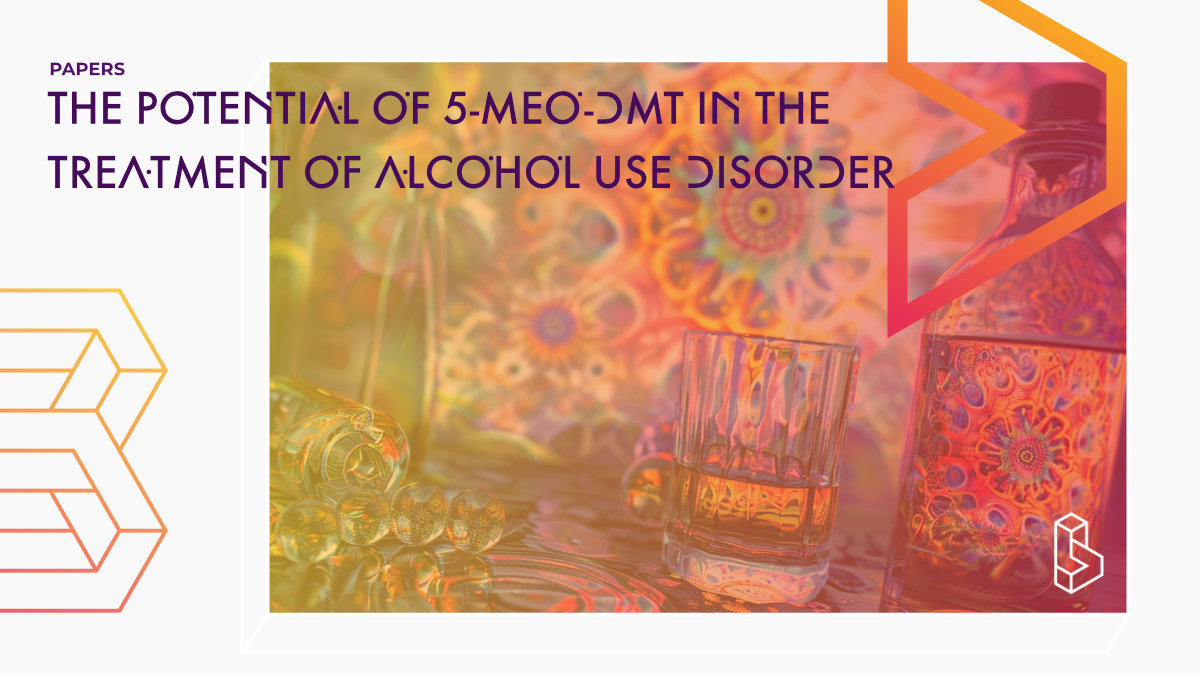This review (2024) examines the potential therapeutic mechanisms of action for alcoholism (AUD) treatment using 5-MeO-DMT. It highlights that 5-MeO-DMT can induce mystical experiences and ego-dissolution, leading to increased psychological flexibility and mindfulness, which may alleviate AUD symptoms. Additionally, preliminary evidence suggests that 5-MeO-DMT modulates neural oscillations and exhibits neuroplasticity and anti-inflammatory properties, indicating its potential clinical implications for AUD and related psychiatric comorbidities.
Abstract of The potential of 5-methoxy-N,N-dimethyltryptamine in the treatment of alcohol use disorder: A first look at therapeutic mechanisms of action
“Alcohol use disorder (AUD) remains one of the most prevalent psychiatric disorders worldwide with high economic costs. Current treatment options show modest efficacy and relapse rates are high. Furthermore, there are increases in the treatment gap and few new medications have been approved in the past 20 years. Recently, psychedelic-assisted therapy with psilocybin and lysergic acid diethylamide has garnered significant attention in the treatment of AUD. Yet, they require significant amounts of therapist input due to prolonged subjective effects (~4–12 h) leading to high costs and impeding implementation. Accordingly, there is an increasing interest in the rapid and short-acting psychedelic 5-methoxy-N,N-dimethyltryptamine (5-MeO-DMT). This paper offers a first look at potential therapeutic mechanisms for AUD by reviewing the current literature on 5-MeO-DMT. Primarily, 5-MeO-DMT is able to induce mystical experiences and ego-dissolution together with increases in psychological flexibility and mindfulness. This could decrease AUD symptoms through the alleviation of psychiatric mood-related comorbidities consistent with the negative reinforcement and self-medication paradigms. In addition, preliminary evidence indicates that 5-MeO-DMT modulates neural oscillations that might subserve ego-dissolution (increases in gamma), psychological flexibility and mindfulness (increases in theta), and the reorganization of executive control networks (increases in coherence across frequencies) that could improve emotion regulation and inhibition. Finally, animal studies show that 5-MeO-DMT is characterized by neuroplasticity, anti-inflammation, 5-HT2A receptor agonism, and downregulation of metabotropic glutamate receptor 5 with clinical implications for AUD and psychiatric mood-related comorbidities. The paper concludes with several recommendations for future research to establish the purported therapeutic mechanisms of action.”
Authors: Stephan C. Tap
Summary of The potential of 5-methoxy-N,N-dimethyltryptamine in the treatment of alcohol use disorder: A first look at therapeutic mechanisms of action
Alcohol Use Disorder
Alcohol use disorder (AUD) is a pattern of compulsive heavy alcohol use and a loss of control over alcohol intake despite adverse consequences. AUD is characterized by neuroadaptations in three major neurocircuits that result in dysfunction in incentive salience, negative affect, and executive function systems, respectively. Currently available treatments for AUD consist of various pharmacological and/or psychosocial interventions with modest efficacy and high relapse rates. There are few new medications approved in the past 20 years.
PAT in the treatment of AUD
Find this paper
https://doi.org/10.1111/adb.13386
Open Access | Google Scholar | Backup | 🕊
Cite this paper (APA)
Tap, S. C. (2024). The potential of 5-methoxy-N,N-dimethyltryptamine in the treatment of alcohol use disorder: A first look at therapeutic mechanisms of action. Addiction Biology, 29(4), e13386. https://doi.org/10.1111/adb.13386
Study details
Compounds studied
5-MeO-DMT
Topics studied
Addiction
Alcohol Use Disorder
Study characteristics
Literature Review

